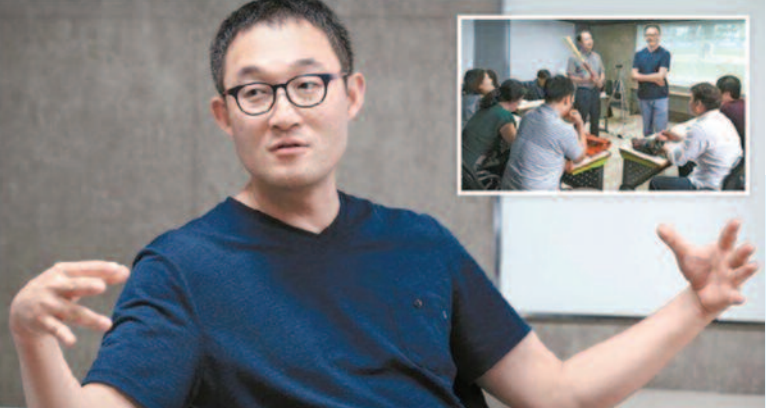 Seungpyo Choi runs a website called Wooriyagoo, or “Our Baseball” in Korea. He is an active ABCA member and reached out to Inside Pitch recently, requesting permission to translate our content for his readers and the rest of the baseball community in Korea. We agreed on one condition – that he let us interview him!
Seungpyo Choi runs a website called Wooriyagoo, or “Our Baseball” in Korea. He is an active ABCA member and reached out to Inside Pitch recently, requesting permission to translate our content for his readers and the rest of the baseball community in Korea. We agreed on one condition – that he let us interview him!
He said: “I have learned a lot from Inside Pitch, your content is very helpful.”
Inside Pitch: Can you start by telling our readers what you’re doing for baseball in Korea through your website?
Seungpyo Choi: I look for good baseball content to translate and use on my website and in our own magazine, which is published bi-monthly and delivered to coaches and parents in Korea. The Korean baseball market is relatively small, but we are hoping to grow it through this type of education.
IP: Where and how did you develop your passion for baseball?
SC: I don't have any direct experiences in baseball. My son started playing when he was 10 years old. I began to look for good information – a search that would take me all over the world – online, of course! Most of what I found was from the U.S., which was great. I was really just looking for ways to help my son.
There is a limited baseball community in Korea and at the time, there was no baseball-specific media available. My son is actually still playing, and I am continuing to learn and have introduced everything to Korean coaches and parents.
IP: Do you generate your own content?
SC: Yes, actually. I often interview Korean baseball coaches, including Korean Baseball Organization teams, league teams and youth teams, and post them on my YouTube channel and website. I also regularly host a seminar where we watch ABCA lectures or YouTube clips, sharing their own experiences and insights with each other. It is very interesting – baseball talk is always interesting!
I have also introduced Rapsodo to some people, of which I am a distributor, along with Vectorball and J-bands in Korea. In addition to what I do on the side, we are continuing to develop several education programs dealing with nutrition, mindfulness, nonviolent communication for coaches and ballplayers are on the way.
IP: What is the Korean baseball culture like?
SC: I believe baseball culture is dependent upon the society where it belongs to. The Korean training and player development system is a little bureaucratic, especially in the youth. My guess is that originated from Japan. That authoritarian culture can be still be observed throughout our country in many ways, and it does have an effect on our baseball. It is not unusual for young kids to be berated by their coaches loudly, which is not a good learning environment and is sad to see, frankly. I do believe that it is possible to change that abusive environment by delivering genuine, authentic coaching tools that can reinvent our attitudes. Part of my goal is to educate enough people for the coaching community to realize this is not the way it has to be, it is not the way it should be.
IP: Other than changing the culture of the coaching community, what are some other goals, or things you would like to see happen with baseball in Korea?
SC: I am sure that the baseball population will decrease within the next 20 years in Korea, largely because of the megatrend of the low birth rate throughout our country; our birth rate is expected to decrease by 50% by 2030. We currently have about 2,000 kids who are starting baseball in our country. We have to prepare a plan to keep this population going, and attract the next generation of youth into baseball.IP
Seungpyo’s son, Hyun-il Choi, is currently pitching in the Los Angeles Dodgers organization. Last year in the Arizona League, he went 5-1 with a 2.63 ERA, with 71 strikeouts and just 11 walks in 65 innings of work.